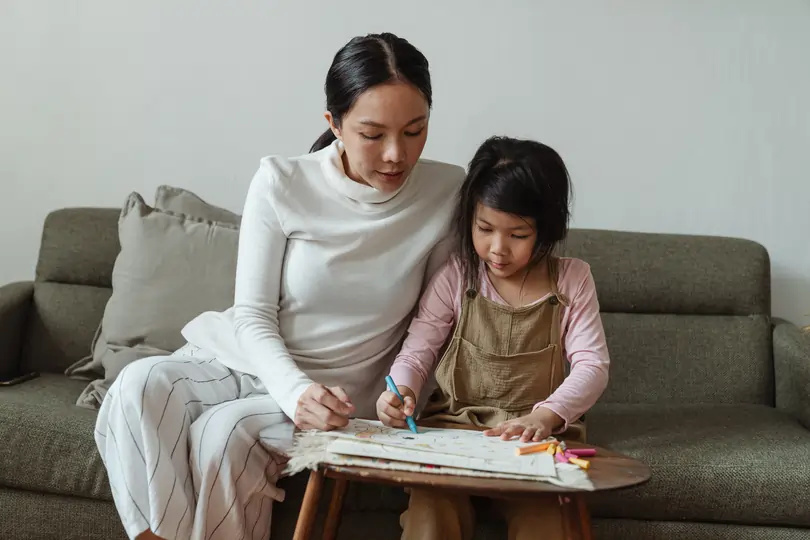Understanding the key differences between AEIS and S-AEIS

In Singapore, international students must clear either the AEIS (Admissions Exercise for International Students) or the S-AEIS (Supplementary Admissions Exercise for International Students) exam to gain admission to a public school.
This article will explain the main differences between these exams to help you decide which exam is the best for your child.
What is AEIS?
To gain a comprehensive understanding of AEIS, refer to this informative article All About AEIS: Difficulty level and how to prepare to score higher.
This article explores the nature of AEIS, its difficulty level, and strategies to achieve higher scores. We will now focus on differentiating AEIS from S-AEIS.
What is S-AEIS?
Similar to AEIS, the Supplementary Admissions Exercise for International Students (S-AEIS) is an examination specifically designed for international students seeking admission to local primary or secondary schools in Singapore. The S-AEIS provides an opportunity for latecomers or those who missed the regular AEIS application window.
Key Differences Between AEIS & S-AEIS
While both AEIS and S-AEIS serve the purpose of evaluating international students' readiness for admission to Singaporean schools, there are significant differences between the two exams:
-
Target Audience
AEIS primarily targets international students seeking admission to mainstream public schools during the regular intake period.
In contrast, S-AEIS caters to students who missed the AEIS application window or wish to join local primary or secondary schools outside of the standard intake period.
-
Examination Content
AEIS, as highlighted in the article shared above, assesses students' English language proficiency, numeracy skills, reasoning abilities, and general knowledge.
On the other hand, S-AEIS primarily focuses on evaluating English language proficiency and numeracy skills, reflecting a condensed examination content.
-
CEQ Cut-Offs For Students Seeking Admissions In Primary Schools
Students who wish to seek admission to primary schools need to appear for and score at least the minimum cut-offs in order to apply for AEIS and S-AEIS.
The difference between the CEQ cutoffs for AEIS and S-AEIS are as follows:
| Age | Cut-Off For AEIS | Cut-Off For S-AEIS |
|---|---|---|
| 7 to 7+ | 100 and above | 100 and above |
| 8 to 8+ | 120 and above | 120 and above |
| 9 to 9+ | 130 and above | 130 and above |
| 10 to 10+ | 140 and above | 130 and above |
| 11 to 11+ | 140 and above | 130 and above |
| 12 to 12+ | 140 and above | - |
-
Examination Difficulty
While AEIS is known to have a moderate to high difficulty level, providing a comprehensive evaluation of students' abilities, S-AEIS may have a slightly reduced difficulty level due to its condensed nature.
-
Registration Process
The registration process for both AEIS and S-AEIS follows similar procedures, requiring students and parents to complete the necessary documentation within the designated timeframe. However, it is important to note the separate application periods for AEIS and S-AEIS and adhere to the specific timelines provided by the respective authorities.
Which exam should you choose?
Determining which exam to choose, AEIS or S-AEIS, depends on several factors that are unique to your child's educational journey. Consider the following points when making a decision:
Timing:
If your child intends to join a mainstream public school in Singapore during the regular intake period, AEIS would be the suitable choice. However, if they missed the AEIS application window or prefer joining a local primary or secondary school outside of the standard intake period, S-AEIS would be more appropriate.
- The AEIS application period is in July 2023, and the exam will be held in September or October 2023. Successful students will join the 2024 batch.
- The S-AEIS application starts in January 2024, with the test taking place in February or March 2024. Students who pass will also join the 2024 batch.
Scope Of Examination:
Evaluate your child's readiness and academic strengths. If they are well-prepared and confident in their overall academic abilities, AEIS, with its comprehensive assessment, may provide a better opportunity to showcase their potential. On the other hand, if your child's focus is primarily on English language proficiency and numeracy skills, S-AEIS can be a targeted approach to meet their specific goals.
Consulting with educational professionals or school advisors can provide valuable guidance based on your child's specific circumstances and aspirations.
Preparation Tips
Preparing for AEIS or S-AEIS requires a structured and strategic approach. While our earlier article on AEIS offers insights into preparing for AEIS, here are additional tips to support your child's exam readiness:
- Understand the syllabus: Familiarise yourself with the exam syllabus and content expectations for both AEIS and S-AEIS. This will help you identify the key areas to focus on during preparation.
- Practice past papers: Obtain past examination papers and practice materials specifically tailored to AEIS or S-AEIS. These resources will give your child exposure to the exam format and the types of questions they can expect.
- Time management: Teach your child effective time management techniques to ensure they can complete the exam within the given timeframe. Encourage regular practice with time-bound exercises to build speed and accuracy.
- Seek professional help: Consider engaging tutors or enrolling your child in preparatory courses designed specifically for AEIS or S-AEIS. Professional guidance can provide personalised support and address any areas of weakness.
So, with proper preparation, including understanding the exam content, practising past papers, managing time effectively, and seeking professional assistance if needed, your child can increase their chances of achieving success in either AEIS or S-AEIS.
FAQs about AEIS or S-AEIS
1. Can my child take both AEIS and S-AEIS exams?
Yes, it is possible for your child to take both exams if they meet the eligibility criteria for each. However, evaluate the necessity and consider the impact on your child's preparation and performance.
2. Are there any age restrictions for AEIS and S-AEIS?
Both exams are open to students aged 7 to 16, depending on the desired grade level. Check the specific age requirements for the grade your child wishes to enter.
3. What if my child does not perform well in AEIS or S-AEIS?
Understand that lower performance in the exams does not necessarily mean there are no other opportunities for admission. Explore alternative options such as private schools or international schools that have different admission criteria. It's important to keep an open mind and consider various pathways for your child's education.
4. Can I appeal the results of AEIS or S-AEIS?
Typically, the results of both exams are final, and admission decisions are based on those results. However, it's advisable to check with the relevant authorities or educational institutions regarding their specific policies on appeals. They may have certain provisions in exceptional circumstances.
5. How can I support my child during the preparation phase?
Supporting your child during the preparation phase is crucial for their success. Create a conducive learning environment, offer encouragement and motivation, and engage in open communication. Monitor their progress, address any challenges they may face, and ensure they have access to necessary study resources. Your involvement and support can make a significant difference in their preparation journey.


 SG
SG  VN
VN 
















